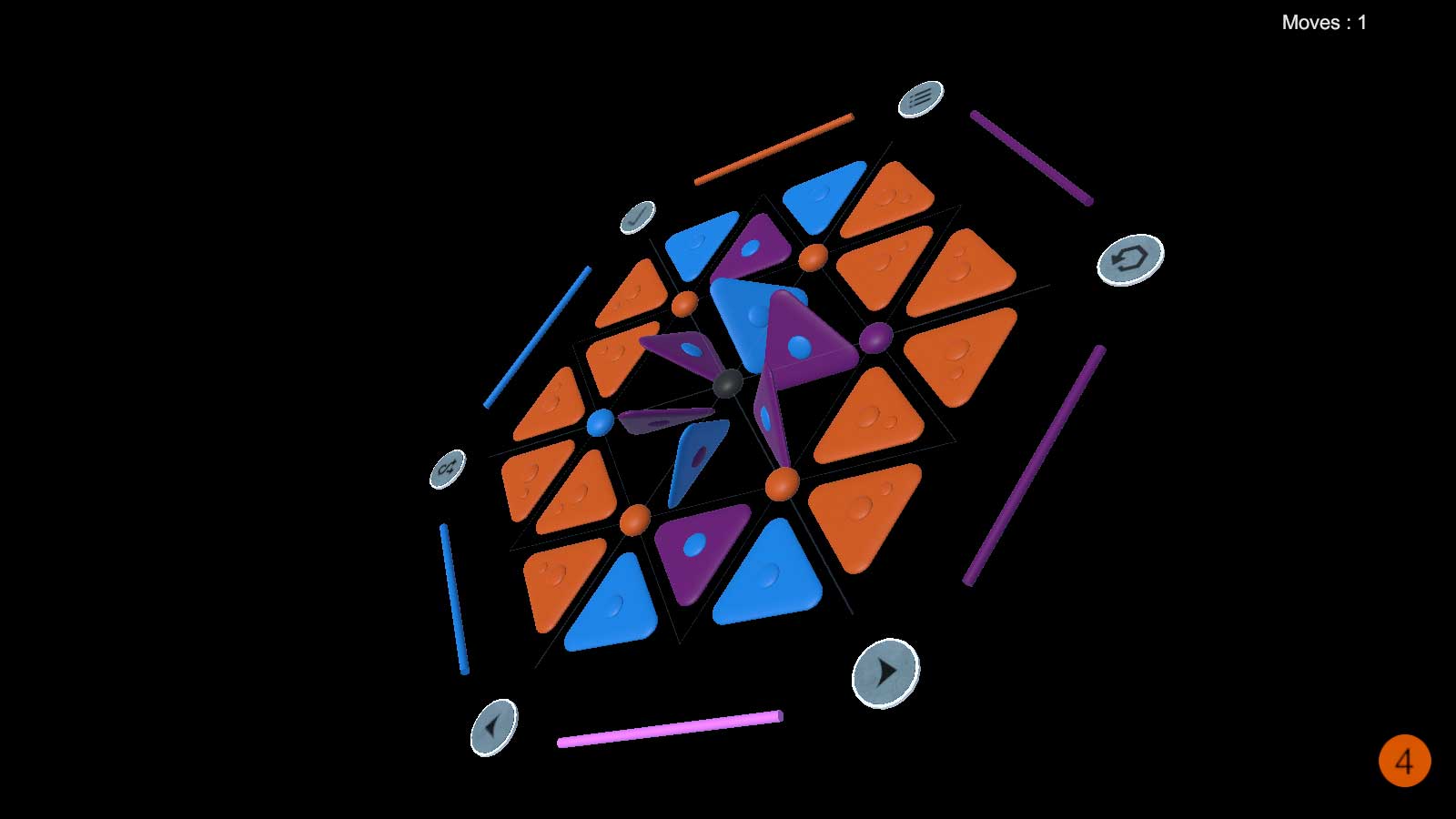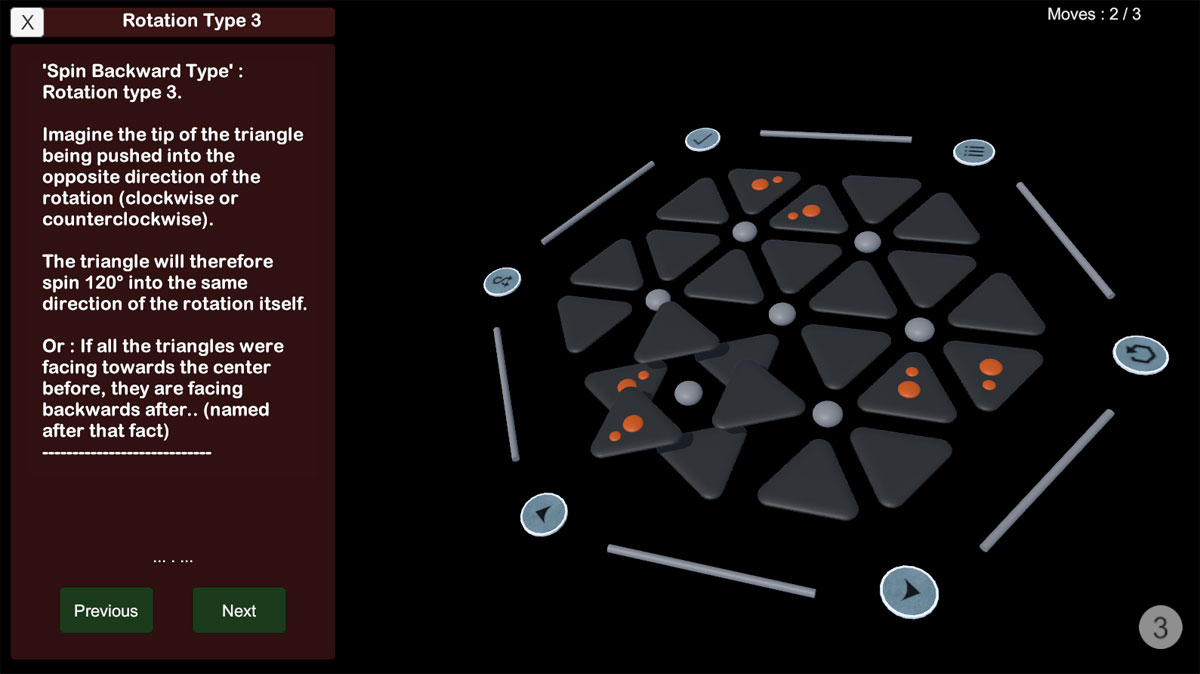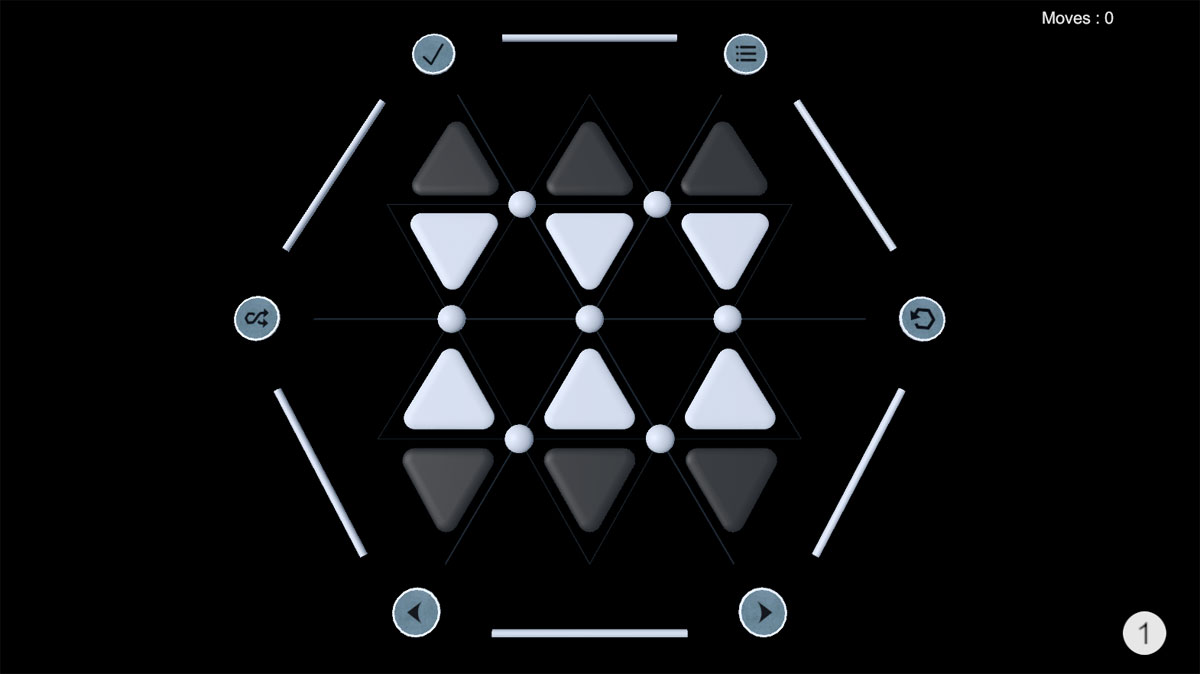There is no system (yet?) that can tell how hard it is to solve a specific puzzle.
Trinagon puzzles depend on a mix of many variables, and even though they can be systematically distinguished (as the puzzle filter does for you), and some maths applied to each (permuitations, triangle groups, symmetries, etc) no clear rating has emerged from that yet.
At least we now know :
- A puzzle with many (like trillions to E24, or E35) is likely hard, but doesn't have to be.
- More rotators actually make it easier to solve, but harder to get it perfect. They make it very hard to cumpute a perfect solution (Gods Nuimber)
- Even seemingly simple puzzles (e.g. nr 8 on the small hexagon) can have a very neat perfect solution that you may not find unless you know it exists !
Should this be part of the diufficulty level even ?
As a consequence :
- There are no clear rules on how to rate a puzzle. Existing difficulty levels are guesswork and personal opinion, mostly.
- There is not yet an upper limit on how difficult a puzzle can be !
- The numbers that puzzles are given upon creation is random ! Also their creation date is used for further distinctions. The difficulty level and the 'creator moves' are assigned to a puzzle after the person designing the puzzle has played & solved it.
When creating a new puzzle it's not even necessarily clear if the intended endposition is even possible !
With a few tools (the two spin tutorial and a programmed method to give a mathematical insight into the puzzle this has become easier though.
No distinguishable skills or movesets have yet been identified, that would be used in solving a specific level, which then could be used to understand more of its difficulty rating.
So far the following estimations are in use :
- Color-Only puzzles are rated below 20.
- Facemarkers (only) can push that limit up to 60 or so, or even more depending on the polyhedron and the rotationtypes used.
- Directionmarkers (only) will have a similar effect, but with those two it very much depends on the mix in positions and colors. Also there is a big influence of to rotationtype and the rotational symetries (odd or even or both) of the polyhedron.
- When mixing things up it gets extremely difficult to find a rating. The puzzle may still be easy, or it could be near impossible to solve with the same basic elements used.

There are some puzzles (for example the HexS puzzles nr. 885453, 885454 & 885455 - on the right ), which only use the simplest rotationtype and only a few moves can solve them (16 or 25 moves), but they are rather hard !
One way to get a basic idea of a puzzles difficulty is to look at the # of moves used to create a puzzle. Usually it's easier to solve a puzzle than to create one, since it's not always clear if the solution even exists. As a basic guideline it does serve though.
As of 2019, the puzzle filter is the only way to distinguish between puzzles.
The filter does already make it possible to find those puzzles you feel like solving, which very much depends on your skill.
It shall be improved upon as well. Sorting options and maybe a search function for a puzzle-id will be added.
If anyone has a genius idea on how to calculate a clean difficulty rating, let it be known :)
For a while, since trinagon is still in its youth, difficulty ratings that appear in the game, are just an estimated value given by the creator of each puzzle, and then calculated to create a certain progression through the game.
With solutions getting uploaded to the server by different players (the future premium edition), the difficulty rating displayed on the homepage will be calculated from the relation between average moves to the best moves, and may also be voted upon.
Clearly also this approach will never be precise. Time will show.





